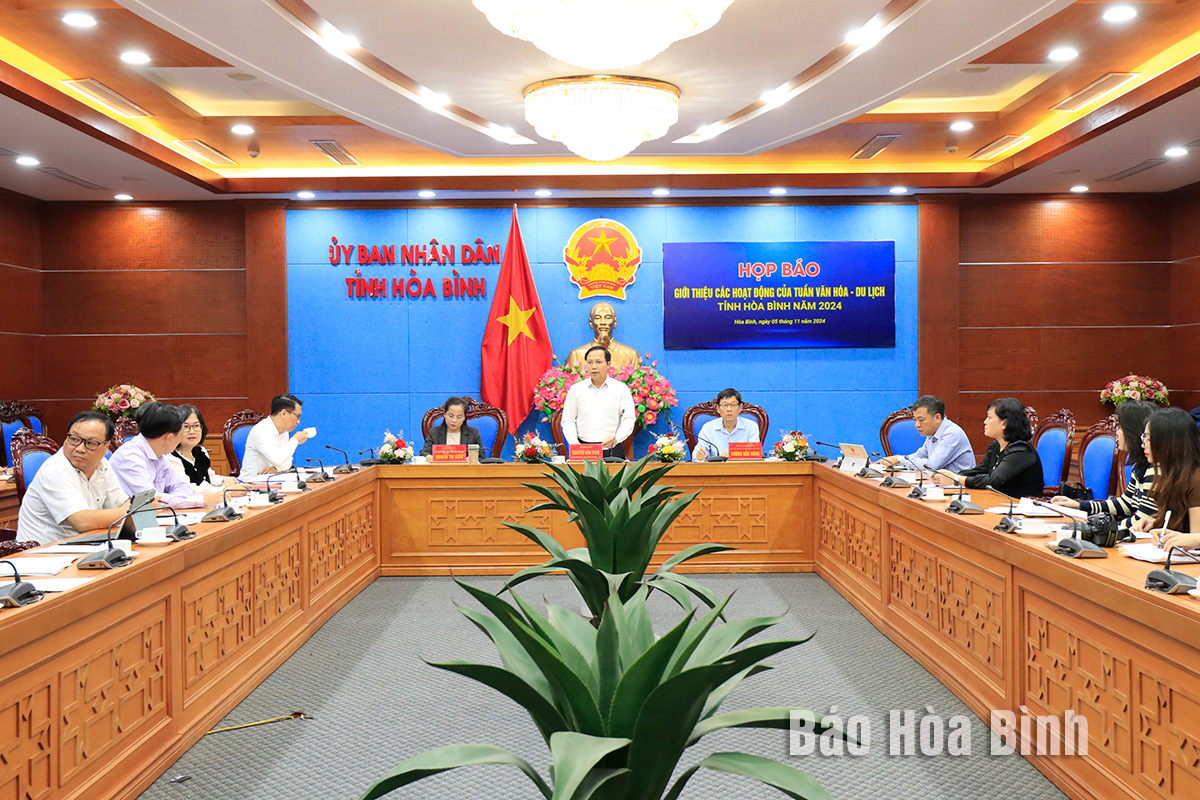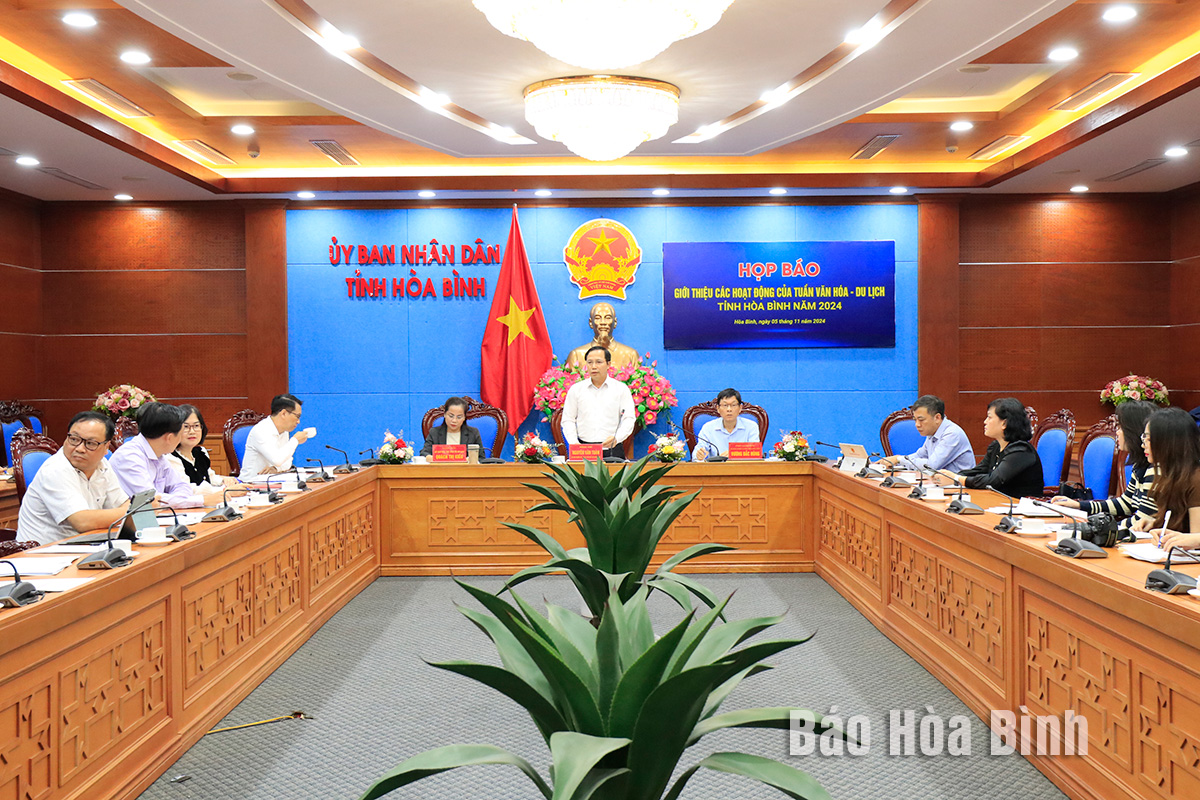
The People’s Committee of Hoa Binh province held a press conference on November 5 to announce the details of its upcoming 2024 Culture-Tourism Week.
Standing Vice Chairman of the provincial
People’s Committee Nguyen Van Toan, also head of the organisinig board of the
Culture-Tourism Week, at the press conference.
The week-long celebration, scheduled for
November 15-23 in Hoa Binh city, aims at popularising the locality’s potential,
strengths, landscapes, and cultural traits. A highlight will be a ceremony on
November 16 to receive certificates recognising Xom Trai (Trai hamlet) cave and
Vanh village stone cliff as special national archaeological sites.
It will feature a wide range of activities
including a fish worshipping ceremony, lantern floating on Da diver, an art
photo exhibition, a tourism guide contest, an ethnic costume performance
festival, an agricultural forum, the second Da river fish and shrimp festival,
and sport fishing competitions.
At a press conference, Standing Vice Chairman of
the provincial People’s Committee and head of the organising board Nguyen Van
Toan underscored the significance of the culture – tourism week and asked
competent sides to enhance coordination in the communications work for the
event.
As a land deeply intertwined with human history and Vietnam’s millennia-long journey of nation-building and defence, Hoa Binh is often revered for its epic tales and legends.
Residents of Hoa Binh boast a rich cultural identity, reflected in their unique language, traditional attire, customs, and folk melodies – described as "sweet as honey, clear as a mountain stream.”
Lac Son district’s Vu ban town held the 2025 Truong Kha temple festival on April 12–13 (the 15th–16th days of the third lunar month). Since its revival in 2019, the festival has been organised every three years, preserving valuable intangible heritage while meeting the community’s cultural and spiritual needs.
The clothing of women reflects the culture of the Muong, Thai, Tay, Dao, and Mong ethnic groups in the northern province of Hoa Binh.
Gongs hold a special place in the cultural and spiritual life of the Muong ethnic people in Hoa Binh province. More than musical instruments, they are an indispensable part of community rituals and collective memory, echoing through generations as a spiritual thread linking the past, present, and future.
Preserving and promoting the cultural values of the Muong ethnic group has become an urgent task in the current context, as many traditional values face the risk of fading away. This effort requires not only protecting the cultural identity but also eliminating outdated customs and developing a modern cultural lifestyle, contributing to sustainable values for the Muong community in Hoa Binh province.
The Muong ethnic culture, deeply rooted in Vietnam’s mountainous north, continues to be preserved and revitalised by dedicated individuals and communities determined to safeguard their ancestral identity.



